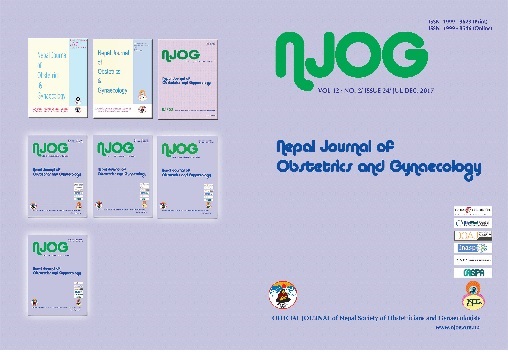Histopathological profile of cervical biopsy specimens at Paropakar Maternity and Women’s Hospital
Keywords:
benign, borderline, cervical lesion, malignantAbstract
Aims: The lesions at uterine cervix cannot be always established only with cytology. Thus, it is very important that cytological abnormality be subsequently correlated with biopsy for confirmation of cervical lesion. Thus it is to see histopathological findings of different types of cervical pathology in cervical biopsies.
Methods: This is retrospective analysis of histology result of 1184 cervical biopsy specimens from 2011 to 2016.
Results: Out of 1108 histologically adequate cervical specimens, benign cervical lesion formed the major part (44.76%)followed by cervical inflammatory lesion (27.43 %). Malignant and borderline cervical lesion constituted 14.35% and 13.44% respectively; 6.4% biopsy samples were inadequate to report.CIN I was common among borderline lesions followed by CIN III. The most common cervical malignancy was squamous cell type and mostly moderately differentiated.
Conclusions:Benign cervical lesions were the most common cervical lesions followed by inflammatory conditions. Among borderline cervical lesions CIN I was commonly found followed by CIN III.Downloads
Downloads
Published
How to Cite
Issue
Section
License
Copyright on any research article in the Nepal Journal of Obstetrics and Gynaecology is retained by the author(s).
The authors grant the Nepal Journal of Obstetrics and Gynaecology a license to publish the article and identify itself as the original publisher.
Articles in the Nepal Journal of Obstetrics and Gynaecology are Open Access articles published under the Creative Commons CC BY-NC License (https://creativecommons.org/licenses/by-nc/4.0/)
This license permits use, distribution and reproduction in any medium, provided the original work is properly cited, and it is not used for commercial purposes.



